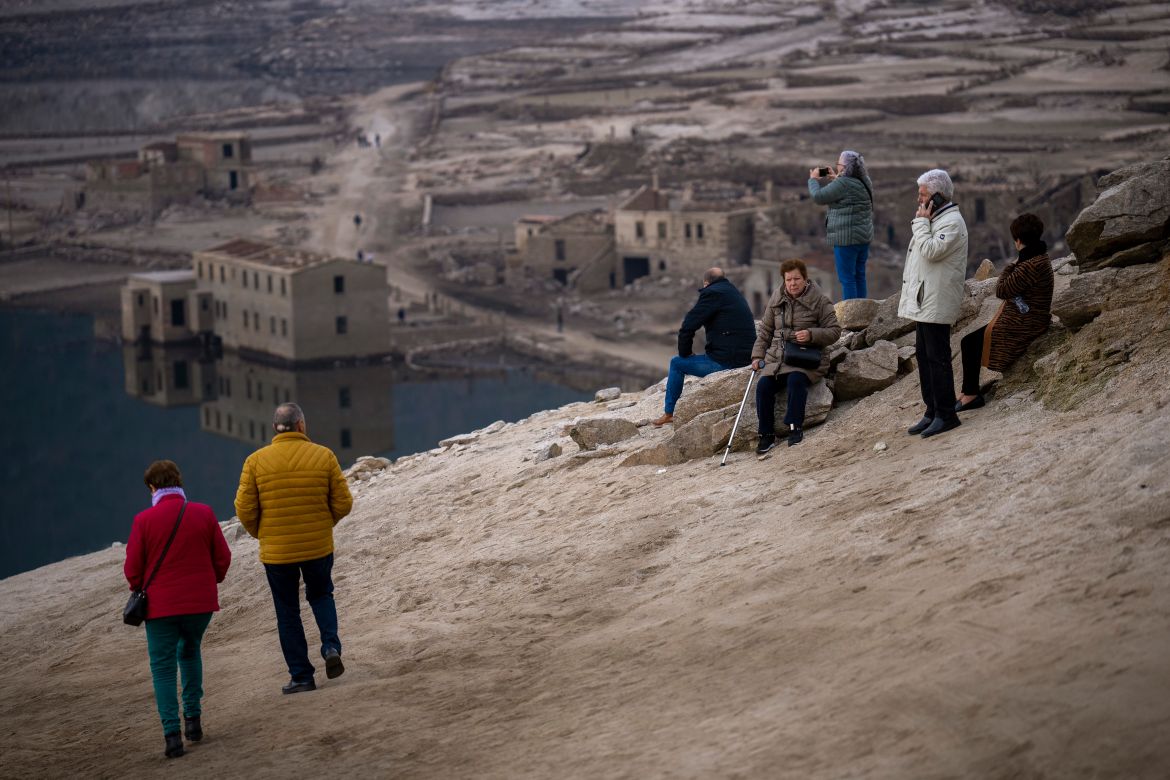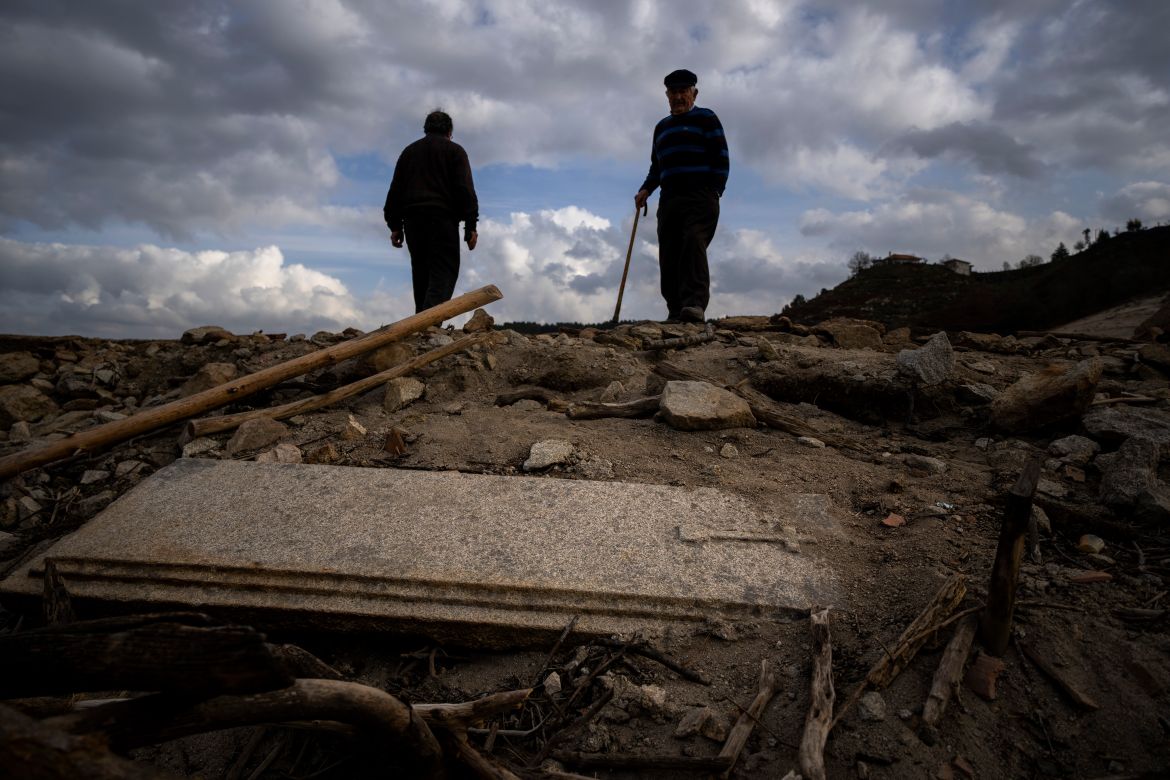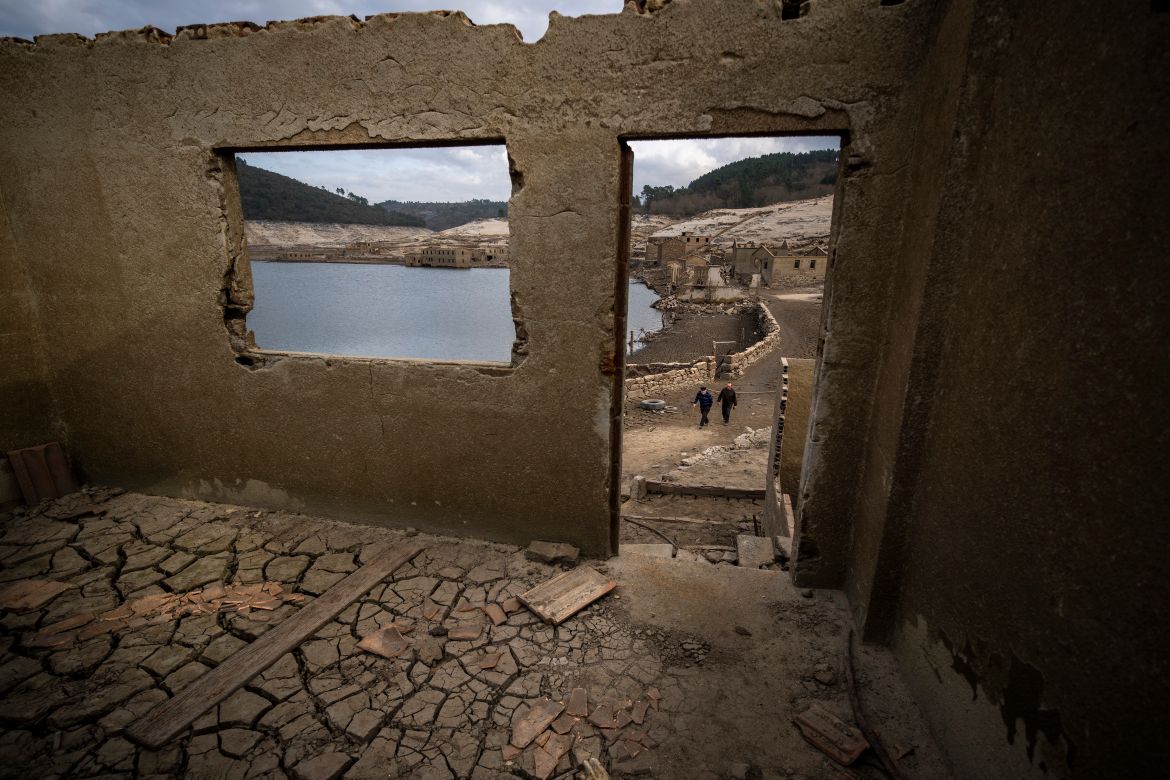In Pictures
Photos: Dry winter drains reservoir in northwestern Spain
Large sections of Spain are experiencing prolonged drought, with rainfall at one-third of the average in recent years.

It has been pretty common every summer to see roofs peeking out of the water at the Lindoso reservoir in northwestern Spain.
If it was an especially dry summer, parts would appear of the old village of Aceredo, submerged three decades ago when a hydropower dam flooded the valley.
But never before has the entire skeleton of the village emerged in the middle of the usually wet winter season.
With nearly no rain for two months and not much expected anytime soon, the ruins of Aceredo are dredging up a mix of emotions for locals as they see the rusted carcass of a car, a stone fountain with water still spouting from it and an old road leading to what used to be the local bar.
In the last three months of 2021, Spain recorded just 35 percent of the average rainfall it had seen during the same period from 1981 to 2010.
But there has been almost no rain since then.
While only 10 percent of Spain has officially been declared to be under a “prolonged drought”, there are large areas, particularly in the south, that are facing extreme shortages that could affect crop irrigation.
The valley around the Guadalquivir River in Spain’s southwest was declared under prolonged drought in November last year.
It is now the focus of a fierce environmental dispute over water rights near Donana National Park, a World Heritage wetland site.
Spain’s government plans to dedicate more than 570 million euros ($647m) from the European Union’s pandemic recovery fund to make its irrigation systems more efficient, including incorporating renewable energy systems.
Spanish Agriculture Minister Luis Planas said this week the government will take emergency measures if it doesn’t rain in two weeks.
Those would likely be limited to economic benefits to palliate the loss of crops and revenues for farmers.







